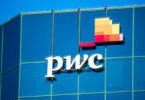U.S. startup MonetaGo has a trade finance anti-fraud blockchain that has been adopted by SWIFT India and hence is available to all Indian banks. Before rolling out the solution to South American markets, MonetaGo has decided to move from Hyperledger Fabric to R3’s Corda Enterprise.
Talking to MonetaGo’s CEO Jesse Chenard, it became clear there were multiple reasons for the move. First and foremost he sees significant Corda adoption in the financial sector, so it’s what his clients want. Secondly, he sees technical advantages in Corda in terms of interoperability with other Corda trade finance networks as well as scalability. And more subtly R3 is a pure platform company.
IBM open sourced Fabric, so it became Hyperledger Fabric. Sometimes issues arise when responding to proposals where IBM is also submitting a bid. Chenard is not the first to comment that he’s been asked how his solution differs compared to IBM which is perceived by some as “owning” Fabric. “It’s a big market perception thing,” said Chenard. That’s not an issue with Corda where R3 is seen as symbiotic rather than competitive.
For the avoidance of doubt, Hyperledger, part of the Linux Foundation, is hugely supportive of developers. It’s a market perception issue.
Monetago’s solution
The current Monetago solution creates an indecipherable hash of invoices which is stored on a blockchain. By checking the blockchain before advancing money, banks can ensure the invoice hasn’t already been financed elsewhere. This is a broadcast-style network available to all participants.
Early last year Monetago rolled out across three major Indian trade finance networks that target small and micro-enterprises. Its success gave SWIFT India the confidence to partner with them. The Indian system will also be migrated to Corda in the future.
“As we have seen the DLT market unfold it has become clear R3 is emerging as the leader in the financial services space” said Chenard. “In order to make sure we take advantage of this momentum, it makes sense to provide our applications built on Corda Enterprise. This will allow us to provide native interoperabiltiy to our existing and prospective banking partners as well as an easy integration with the leading trade finance platforms being launched such as Voltron and Marco Polo.”
Interoperability and scalability
Corda is designed out of the box to interoperate at a technical level with other Corda-based networks such as Voltron and Marco Polo. That’s not the case for Hyperledger Fabric. However, protocol interoperability is only one part of the challenge, albeit a tricky one. To achieve interoperability additionally the data needs to be in a consistent format, identities need to be shared between networks, and the ledgers need to be compatible at a legal, contractual and jurisdictional level.
Chenard told Ledger Insights that a couple of the South American countries are looking at replacing their Lien registry systems with Monetago technology. For them a hash is insufficient, they need to know the details. Hyperledger has a concept of channels, similar to mini blockchains, to enable privacy. But with the intention of adding hundreds of participants, Chenard explained: “we were a little bit concerned about that scalability aspect.”
For sharing details, Corda enables just the relevant participants to share data privately at a granular level, for example for single invoices. “From a load testing perspective we looked at both and Corda came out ahead,” said Chenard. There will additionally be a broadcast of the hashed data.
But Chenard was also keen to emphasize he’s still a supporter and fan of Hyperledger both as an organization and its projects Fabric, Sawtooth and particularly Indy which underpins the Sovrin identity network.







